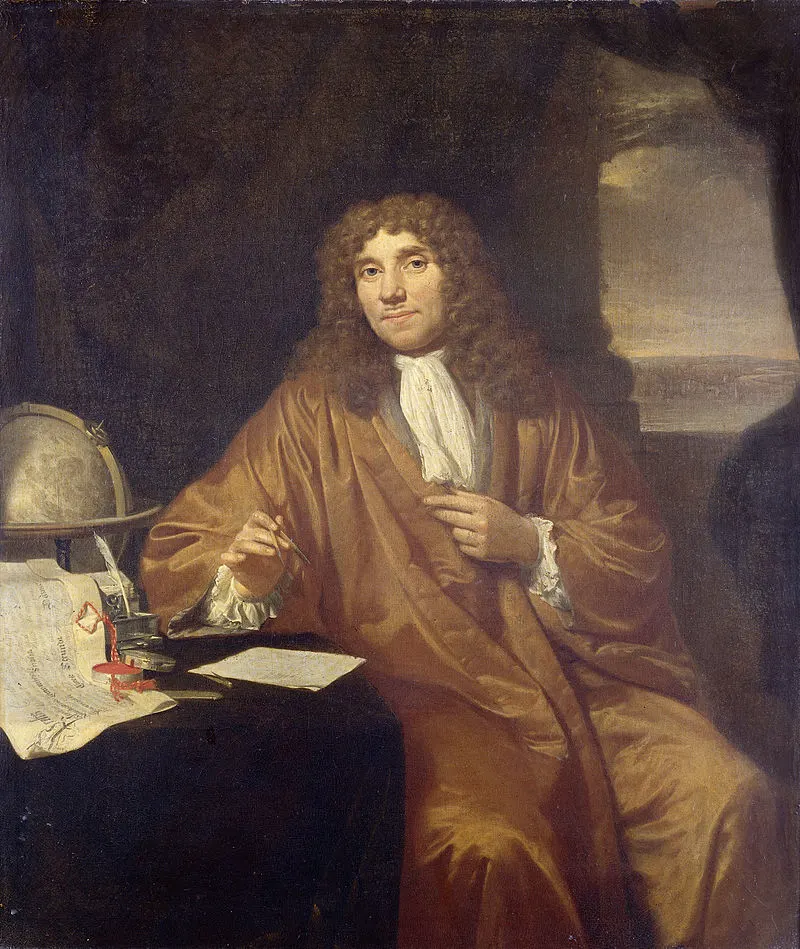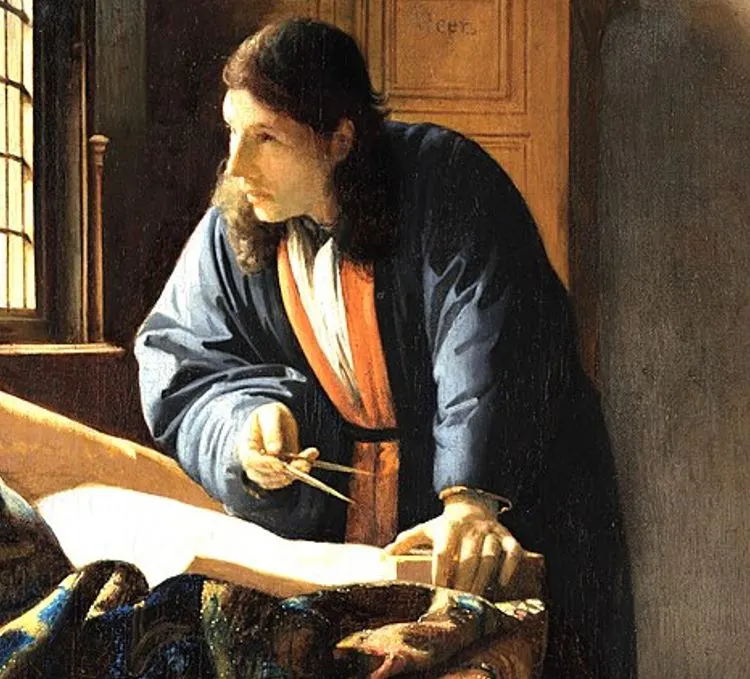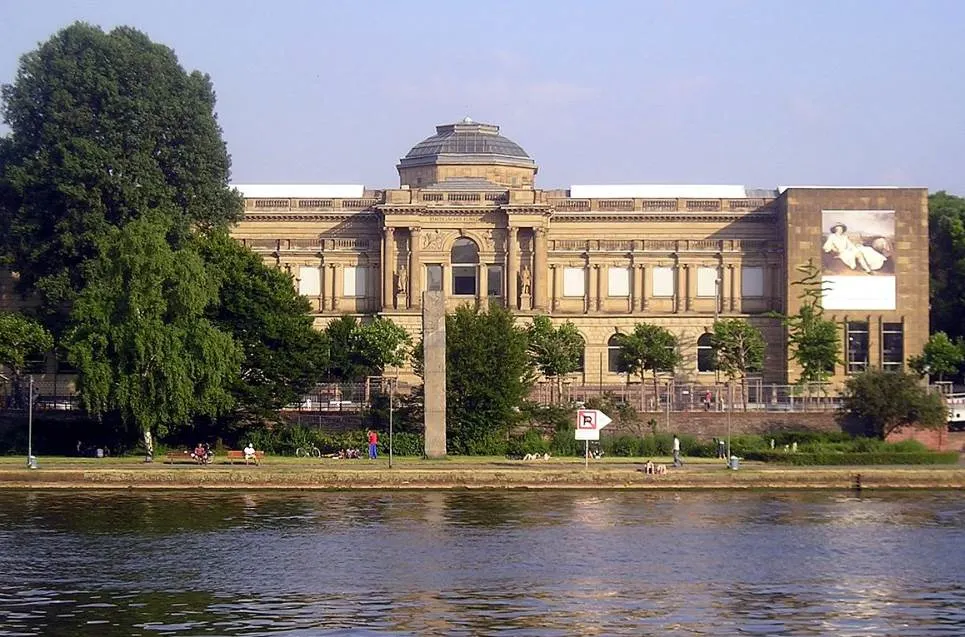The 17th century was the most important period in Dutch history. That’s because the Dutch Republic was one of the most advanced nations on the planet at the time.
Today, this period spanning approximately between 1588 and 1672 is known as the Dutch Golden Age. The painters who lived during this era are known as Dutch Golden Age painters.
Johannes Vermeer (1632-1675) lived at the height of the Dutch Miracle but unfortunately, the collapse of the art market following the “Rampjaar” also meant his demise.
Most of Vermeer’s paintings take place inside his own house. Here he meticulously focused on the delicate little artworks he produced.
In this article, you’ll discover some of the most interesting facts about The Geographer by Johannes Vermeer, a typical Dutch Golden Age painting.
1. It was painted during the final years of the 1660s
Johannes Vermeer was born and raised in the Dutch city of Delft, and he barely left his hometown during his lifetime.
He became a member of the local Guild of Saint Luke in 1653, the year that he got married and moved into the house of his mother-in-law.
Most of his oeuvre depicts scenes inside two rooms on the second floor of the house where he had his studio. He also worked slowly and only painted one or two pieces a year.
He used expensive pigments and has a few important patrons that supported his career. When this patronage ended after the Rampjaar of 1672, he became depressed and died just a few years later.

He painted The Geographer between 1668 and 1669, a period that can be described as the height of his career.

2. It depicts a man who is studying charts and maps in a small room
As the title of this painting suggests, it depicts a man who appears to be a geographer. He is in deep contemplation while studying maps and charts that lie on the desk in front of him.
He wears a Japanese-style robe, a clothing item that was popular among intellectuals at the end of the Dutch Golden Age.
He holds a divider in his right hand, a common item used by a geographer. The globe on the closet in the background further identifies the occupation of the man.
Like in most of Vermeer’s paintings, the light source comes from a single window on the left and he magnificently projected the light and shadow on all items in the room.

3. It’s one of only 3 paintings that Vermeer ever signed and dated
The small collection of paintings that Vermeer produced is highly detailed but was virtually forgotten until it was rediscovered in the 19th century.
The main reason is that he only signed and dated 3 paintings during his entire career, including the Geographer.
The signature can be found on the wall in the top right corner of the painting and mentioned his name and the year the painting was completed (1669):
I VerMeer
MDCLXVIIII

4. The presence of the globe links it to another famous Vermeer painting
The other two paintings that he signed and dated were “The Procuress” (1656), a work that presumably features his self-portrait, and “The Astronomer” (1668), a work that very much resembles this one.
Both the Astronomer and the Geographer were painted around the same time and appear to be depicting the same man.
The globe in the background is being studied by this man in the Astronomer painting and both works were long believed to be pendants.
This globe has been identified as one produced by Jodocus Hondius in Amsterdam in 1618. These were relatively common items in upper-class households such as Vermeer’s.
One remarkable detail is that the globe is pointed toward the Indian Ocean, the place where the Dutch East India Company was active at the time.

5. There’s another reason why the paintings are believed to depict the same person
The man appears to be the same and the items in both paintings complement each other as well. A study conducted in 2017 removed all doubt that this was indeed the same man.
It was discovered that the canvas of both paintings was cut from the same bolt of material. This also confirms that they might indeed be pendants.
The depicted man is believed to be Antonie van Leeuwenhoek (1632-1723), a contemporary of Johannes Vermeer who later became a renowned microbiologist.
He was also the man who executed Vermeer’s will after the painter passed away in 1675, which probably means that they knew each other well.

6. Vermeer made several changes to the original version of the painting
What’s fascinating about the Dutch artist is that he seemingly spent several months producing a pretty small work of art.
He had eleven children so this might have contributed to his limited output, but he surely was a perfectionist as well.
He made several changes to this painting after he completed the first version. This included:
- The man’s head was in a different position and his face became more highlighted afterward.
- He looks up and was originally looking down toward the map in front of him.
- The divider in his hand was pointed toward the map instead of the current horizontal position.
- The small seat in the bottom right corner had a sheet of paper which probably made this area too bright.

7. How big is The Geographer by Johannes Vermeer?
Christ in the House of Martha and Mary is his largest painting with dimensions of 160 × 142 centimeters (62.4 x 55.7 inches). Most of his works are significantly smaller than this.
The Geographer (1668-1669) by Johannes Vermeer is a small oil on canvas painting that has dimensions of 52 × 45.5 centimeters (20 × 17.9 inches).

8. Where is Vermeer’s beautiful painting located today?
Both The Geographer and The Astronomer stayed together until the late 18th century as they were believed to be pendants, even though they aren’t identical in size.
They were also referred to as the “Astrologers” in the centuries following their completion. Both works were finally separated during a sale in Amsterdam in 1797.
The painting changed hands several times throughout the 18th and 19th centuries and eventually ended up in the collection of a man named Kohlbacher who sold it to the Städelsches Kunstinstitut in Frankfurt in 1885.
Today, Vermeer’s masterpiece is still part of the collection of the Städel, one of the most fascinating art museums in Germany.

